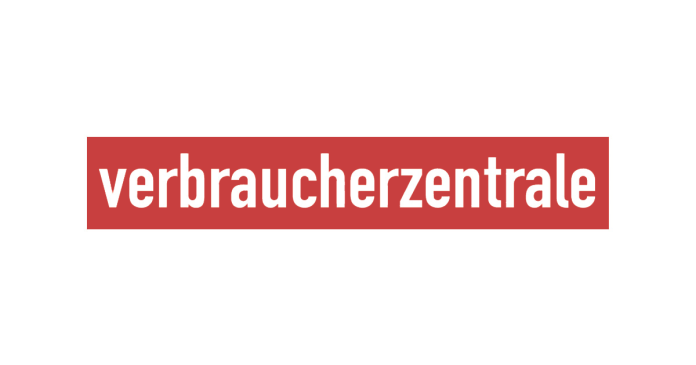Choosing the right checking account is crucial to avoid unnecessary costs and get the best conditions. Our checklist will help you evaluate the most important criteria and find the right account for you.
The most important thing in brief:
- When choosing your checking account, pay attention to basic monthly fees and additional costs for transactions and cards.
- Compare the costs and types of payment cards (checking, debit, credit cards) and their replacement cards.
- Check conditions such as monthly cash receipts and other hidden requirements.
- Make sure there is a dense network of free ATMs available.
- Compare the interest rates for overdrafts and tolerated overdrafts to avoid high costs.
1. Account management fees: How much does account management cost?
Costs are a key aspect when choosing a checking account. Some banks offer free accounts, others charge basic monthly fees and additional transaction costs.
Important questions when choosing your checking account:
- Basic monthly fee
- Cost per booking
- Costs per standing order
- Costs for TAN device (app, generator, etc.)
Tip: Check the banks' price and service lists to get a precise overview of costs.
2. Which payment cards do you receive – and at what price?
Every checking account includes different cards for electronic payment transactions. There are customer cards that are only suitable for withdrawing money from bank ATMs.
Giro cards and debit cards are widely used for cashless payment transactions. Credit cards can often be used worldwide to pay locally or online or to withdraw money.
All card types have their advantages and disadvantages. Accounts with checking cards or debit cards and credit cards offer the highest flexibility.
To select your current account, check which cards are included and what costs are associated with them:
- Customer card costs
- Debit card costs
- Debit card costs
- Credit card costs
- Cost of replacement card
Tip: Compare fees and choose the card combination that offers you the most flexibility.
3. Is the account subject to certain conditions?
Many banks only offer cheap accounts under certain conditions, such as: B. a regular monthly receipt of money.
Before opening an account, check whether there are such, possibly hidden, pitfalls:
- Lower limit for monthly payment receipts
- Is a specific salary receipt required?
- Other conditions (example: customers must open a deposit account in addition to the current account, possibly even with a minimum deposit value).
Tip: When choosing your checking account, pay attention to possible hidden conditions to avoid unpleasant surprises.
4. How well developed is the ATM network?
A dense network of ATMs is important in order to be able to withdraw cash free of charge anytime and anywhere. Therefore, you should check what it looks like before opening a checking account. There are 4 large ATM networks in Germany: that of the savings banks, that of the Volks- und Raiffeisenbanken (BankCard ServiceNetz), that of the cash group (Deutsche Bank, Commerzbank, Hypovereinsbank and Postbank) and that of the cash pool (Santander Bank, Targobank, Sparda -Bank and a number of smaller banks).
Many banks now also offer free withdrawals in (European) countries. This can be an important plus for people who travel a lot.
- Savings Bank Association
- BankCard ServiceNet
- Cash Group
- Cash Pool
- Other
When selecting your current account, also check out free withdrawal options:
- Are withdrawals free throughout Germany?
- Are withdrawals free across Europe?
- Are withdrawals free worldwide?
Tip: Check which ATMs are available in your area. And whether you want and can get cash in other places, such as when shopping in the supermarket.
5. Overdraft interest: How high is the interest on overdrafts?
You should avoid letting your checking account slip into the red. But every now and then it can still happen: the balance becomes negative. Then banks charge overdraft interest – if they have previously expressly given you the opportunity to overdraw your account up to a certain amount. These interest rates are often steep and vary greatly from institution to institution.
If you do not have such an overdraft limit or exceed it, then even higher interest will be due – the so-called interest for tolerated overdrafts.
To differentiate:
- Agreed overdraft facilities (“overdraft facility”): The bank has previously agreed that you can overdraw your account up to a certain amount. The interest to be paid is often very high.
- Tolerated overdrafts: Credit and granted overdraft facilities are not sufficient for payment. Nevertheless, the bank allows this. Interest rates are often even higher than with overdrafts.
Example: If you have an overdraft facility of 5,000 euros, but your current account is in the red by 7,000 euros, you pay the agreed interest rate up to 5,000 euros Overdrafts. Depending on the bank, this can be up to 17 percent. For those 2,000 euros in the red that exceed this limit, an even higher interest rate may apply tolerated overdrafts to be added.
When choosing your checking account, ask yourself these important questions:
- How high is the interest rate for agreed overdraft facilities?
- What is the interest rate for tolerated overdrafts?
Tip: Compare interest rates to avoid expensive overdraft fees.
6. What about interest on credit balances?
Normally, checking accounts do not offer interest on balances. This is annoying if you have a large sum lying there at short notice. Therefore, check whether it is worth parking your money in a current account at the same bank.
Check:
- How high is the interest rate on the current account?
Tip: To choose your current account, compare the interest rate on the current account.
7. What account management options does the bank offer?
So-called direct banks without their own branch network often offer particularly cheap checking accounts. You can only carry out banking transactions via the Internet or by telephone. Conversely, branch banks – in addition to on-site account management and additional offers such as lockers in the basement – often also offer the option of managing the account online or by telephone. Make sure that the option you prefer is always offered.
When choosing your checking account, ask yourself:
- Is there a branch nearby?
- Is it possible to manage an account via the Internet?
- Is app-based account management offered?
- Is there an option to manage your account by phone?
8. Security of online transactions
There are various methods for securing online transactions that have different advantages and disadvantages, including in terms of security. For security reasons, lists with transaction numbers (TAN, iTAN) are no longer offered. The mobile TAN procedure (mTAN/SMS-TAN) is recommended with restrictions. A TAN generator (chip TAN/photo TAN) or the HBCI process offers greater security. In practice, procedures are often offered that are based on an app on the smartphone (Push-TAN/AppTAN).
To select your checking account, check the different methods for securing online transactions and their costs:
- Mobile TAN available?
What costs? - TAN generator available?
What costs? - HBCI process available?
What costs? - App-based procedures available?
What costs? - Another procedure available?
What costs?
Tips for choosing your checking account
Choosing the right checking account requires careful consideration of fees, terms and services. Use this checklist to find an account that best suits your needs. Compare offers and look out for hidden costs to make the best decision.
Here you also have the option of downloading the checklist, printing it out and entering the relevant costs for the bank/provider and the associated tariffs.


